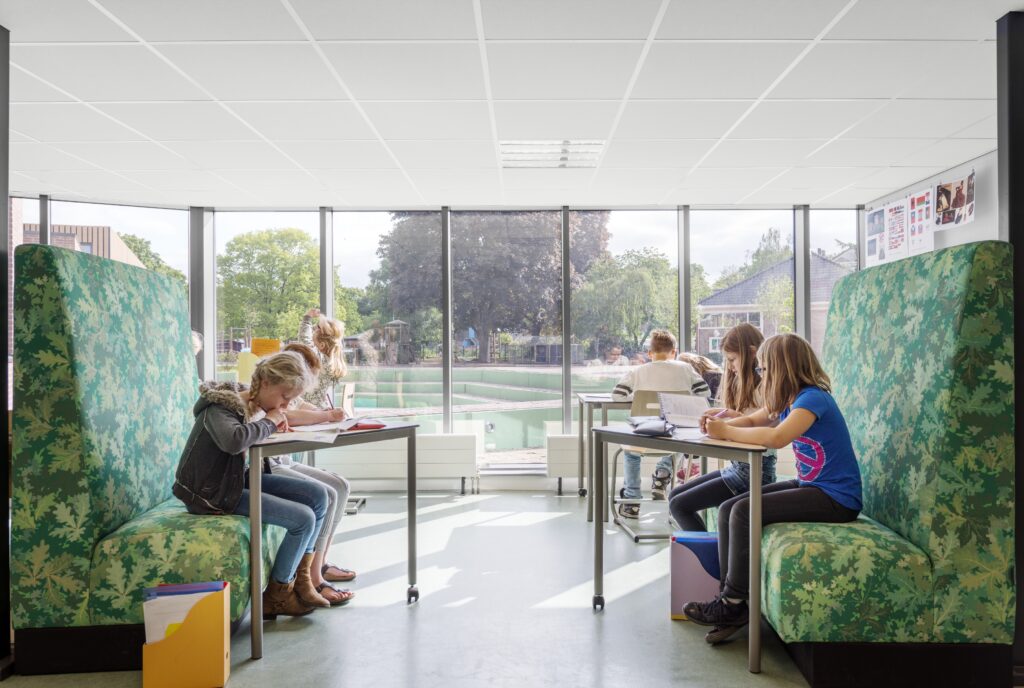Lighting
The ability to obtain maximum daylight in the room is important both mentally and physically. Pupils respond well behaviourally to daylight, and to being able to see outside. Being able to regularly look to short and long distances is also beneficial to eye development.

Nowadays, designers of new schools have to meet strict standards with regards to daylight during the design stages. This often results in the inclusion of windows into adjoining corridor spaces, ensuring that daylight levels are appropriate in all parts of the classroom room as well as the corridor.
Top tips:
- Avoid covering windows with posters or paper as this darkens the room.
- Good quality blinds are much more effective and controllable than curtains.
- Ensure artificial lights produce adequate light of sufficient quality.
- Try to raise blinds first, instead of turning on the lights, in order to provide the most natural and calm environment for their pupils.
Poor lighting is a significant barrier to learning. Our work is confirmed by recent school environment studies, and detailed research for other working environments. For example recent research confirms evidence that good lighting significantly influences reading vocabulary and Science test scores (Barrett et al., 2015). Learnometer reports lumen (lux) levels throughout the day and plots them constantly and automatically for you wherever it is installed.
Our guide would be above 500 lux, with a sensible target of 1,000 – but being careful to get the “right” Kelvin values in your electrical lighting too.
Professor Stephen Heppell

